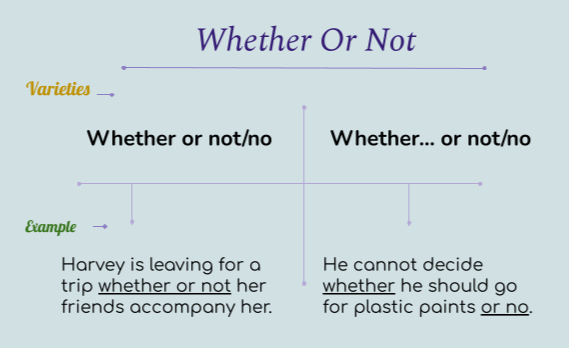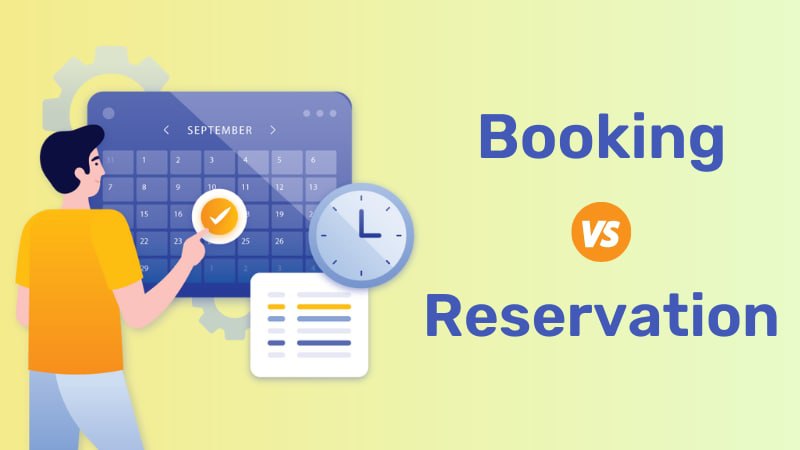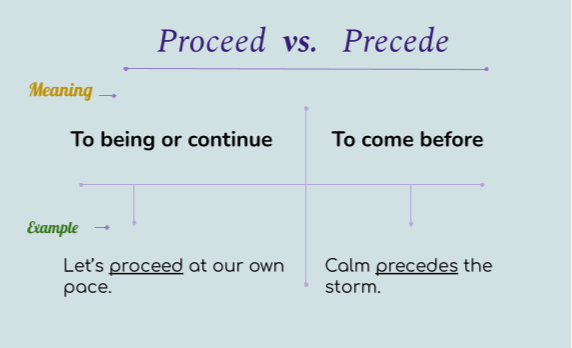Whether Or Not - Learn the Correct Use

Whether or not is the phrase used to express a no-matter-what attitude or state confusion depending on how it is used in the language. There are a few varieties of ways this phrase can be used and that often create confusion as learners attempt to use it correctly in spoken and written speech.
Whether or not / Whether or no
Whether or not is the phrase used to emphasize one thing between two opposing matters. It is often used to express the stubbornness of the speaker. Whether or no is a slightly different way of saying the same thing and the one -t difference has no particular significance.
Decided clause + Whether or not/no + Optional clause
- I’m going to the seminar whether or not you are coming with me.
- Hervey is leaving for a trip whether or no her friends accompany her.
The first example expresses an unalterable decision starts the sentence off and an optional statement follows the phrase- Whether or not. The second one follows the same process but the linking phrase here is Whether or no.
Whether or not/no + Optional clause + (,) + Decided clause
- Whether or not kids prefer to come home late, parents decide their curfews.
The example has the optional statement following Whether or not and then comes the decided part of the sentence as there are linked with a comma.
Statement of confusion + Whether or not/no + What’s confusing
- Gabby is confused whether or not she is ready for her performance tomorrow.
- You can never be too sure whether or no speeches are easy to understand.
- He cannot decide whether or not he should go for plastic paints.
It is a great idea to express confusion with the phrase. The three examples above entail how the phrase can be used correctly to express confusion, uncertainty and indecisiveness in the English language. It starts with the blatant fact that someone is confused or uncertain before the phrase- Whether or not as what bothers them follows right after.
Whether … or not / no
Whether…or not is the broken down version of Whether or not as the optional statement is placed in between “Whether” and “Or not” and the emphasized or decided statement follows right after.
Whether + Optional clause + Or not/no + (,) + Decided clause
- Whether you are coming or not, I am going to the seminar.
- Whether her friends accompany her or no, Harvey is leaving for a trip today.
The difference here is the sentence construction and nothing else compared to when Whether or not is an attached phrase. Here, the optional clause is followed by the conjunction Whether at the very beginning of the sentence, and Or not/no comes after the optional statement before the comma and the decided clause consequently.
Decided clause + Whether + Optional clause + Or not/no
- Parents decide their curfews whether kids prefer to come home late or not.
This is the same kind of statement constructed a bit differently fit for times when we need some variety. Here, the decided fact starts the sentence and Whether, the optional clause and the last half of the phrase- Or not/no follows along consequently.
Statement of confusion + Whether + What’s confusing + Or not/no
- Gabby is confused whether she is ready for her performance tomorrow or not.
- You can never be too sure whether speeches are easy to understand or not.
- He cannot decide whether he should go for plastic paints or no.
To express confusion or uncertainty with this very construction, one must state that someone is confused or uncertain to begin the sentence, the conjunction- Whether sits after that before starting the exact confusion and then it can end with Or not/no.
Grammar
Read More
- How to Use "Therefore" in Sentences Avoiding Common Mistakes
- How to Use "Whereas" with Examples and Avoid Common Mistakes
- When and How to Use "Thus" Correctly Without Common Mistakes
- How to Use "On the Contrary" Properly with Meaning and Examples
- When and How to Use "Either/Or" with Examples and Common Mistakes to Avoid
- How to Use "On the Other Hand" Effectively without Mistakes
- How to Use "Respectively" with Example and Common Errors to Avoid
- How and When to Use "Moreover" Without Mistakes
- How to Use "Likewise" in Sentences Based on Context & When not to Use
- When & How to Use "Although" in Sentences to Avoid Mistake


